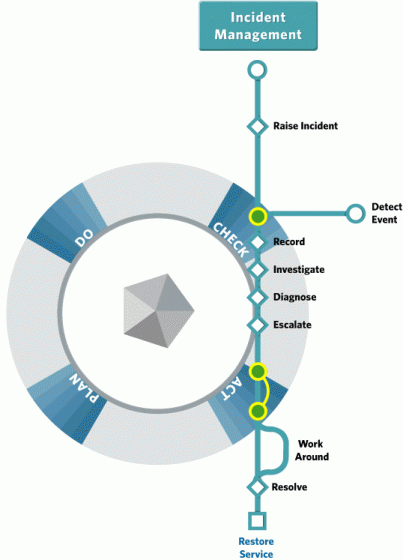ITIL Incident Management
Incident management is a process area found within the ITIL check lists. The goal of any incident management process is to effectively and quickly get a business back to normal service operation. This way, a business’ operations are not impacted as severely. This results in a higher level of service quality. According to ISO 20000, the most important objective of an Incident management team is to “restore agreed service to the business as soon as possible or to respond to service requests.”
What is an Incident?
An incident is the result of errors in the IT infrastructure. If the cause of the incident is known, there is no need for further investigation. The repair can be made to remove the error. However, should the cause of the error not be known, further investigation is necessary to determine what exactly caused it. In some instances, a problem record is created because of the severity of the incident. This results in the Problem Management team being brought in to determine what the root cause is of the error. Once this root cause has been found, it becomes a known error.
The Process of Incident Management
For incident management to work effectively, there is a series of processes that are implemented. This check list is what the incident management follows to ensure that the incident is resolved as quickly and effectively as possible. This way, the business can return to full functional abilities. As mentioned above, that is the Incident Management’s ultimate goal.
The first step is to detect and record the incident. There needs to be documentation prepared on the incident. This would include what happened and other important details on the incident. Once this is done, the team classifies the incident. While this is going on, support is offered to the customer to try and help them through the incident. This way, they at least have some sort of functional ability.
With the incident classified, the next step is to investigate and diagnose. During this process, the team tries to come up with a solution to the problem so that they can pass it on to the customer. The faster that this process can be done, the more efficient the incident management team really is. Once there has been a resolution created, this is passed on to the business. This is the fourth step known as resolution and recovery. During this, the incident management team implements the recovery for the business.
Finally, the incident closer and ownership steps are implemented. Documentation is drafted so that, in the future, the incident management team know how to better handle said scenario. Because the ultimate goal is to work quickly and efficiently, they try and draft documentation for their team to work with in the future.


Comments - No Responses to “ITIL Incident Management”
Sorry but comments are closed at this time.